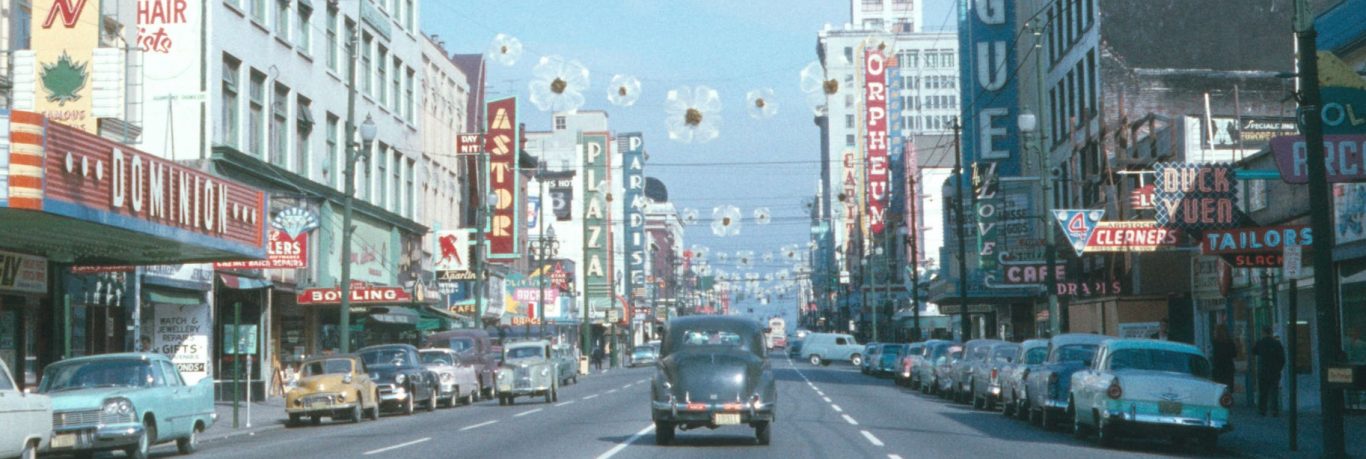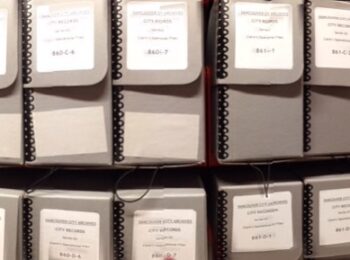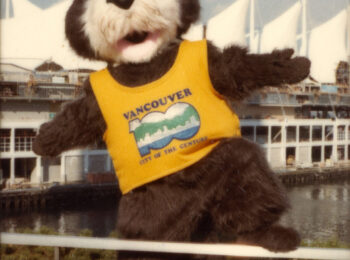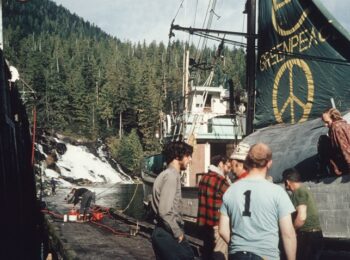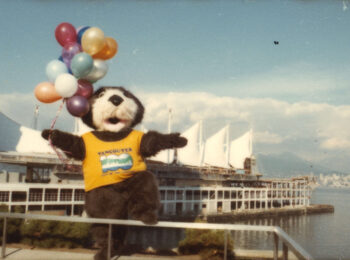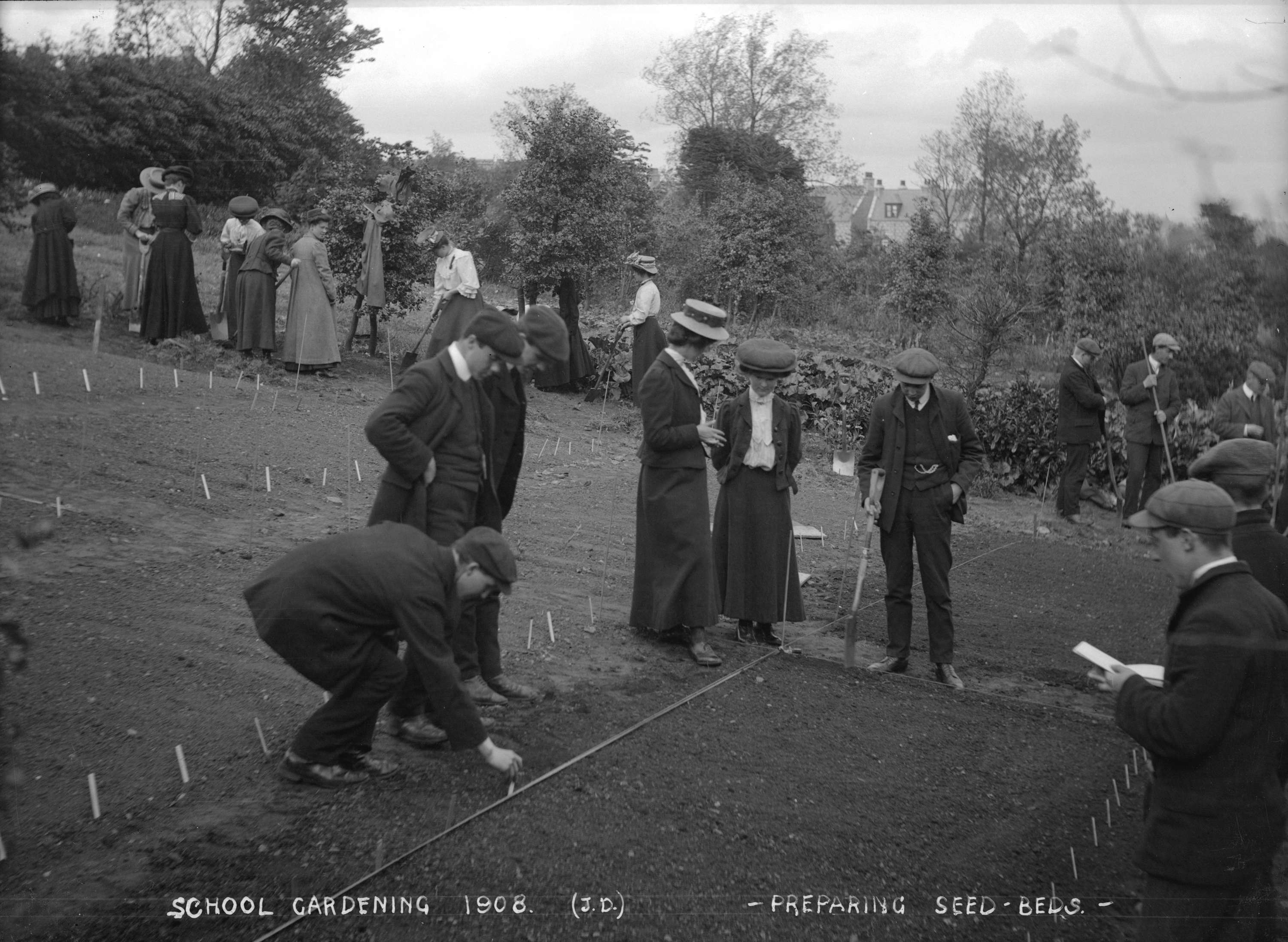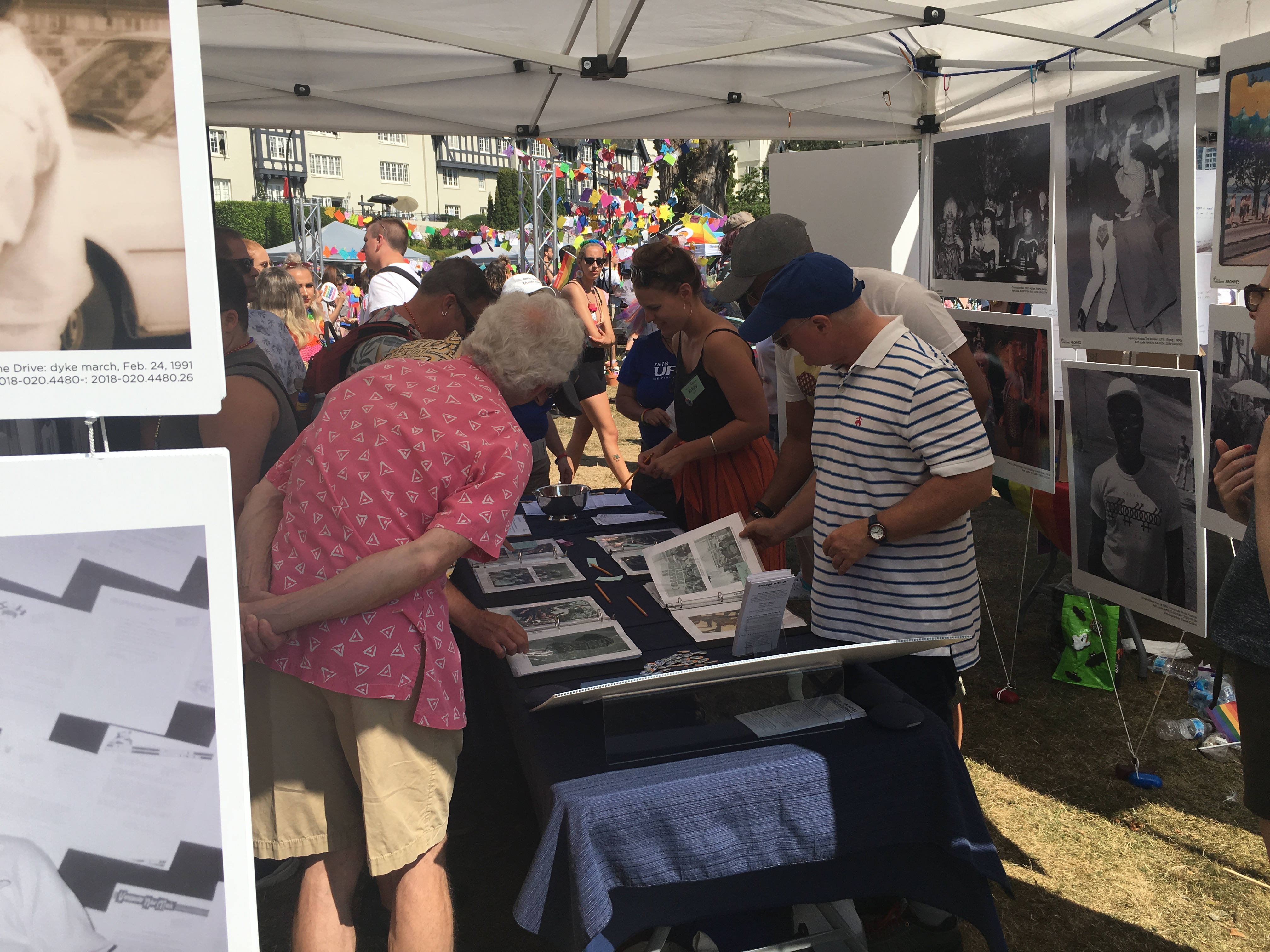The newest Merging Time exhibit is now on display in the City of Vancouver Archives’ gallery. Since its initial showing at the Archives three years ago, this annual photography exhibit has become an attraction for both historians and photographers alike. This year, the exhibit features 16 new digital interpretations of our scanned archival photographs.
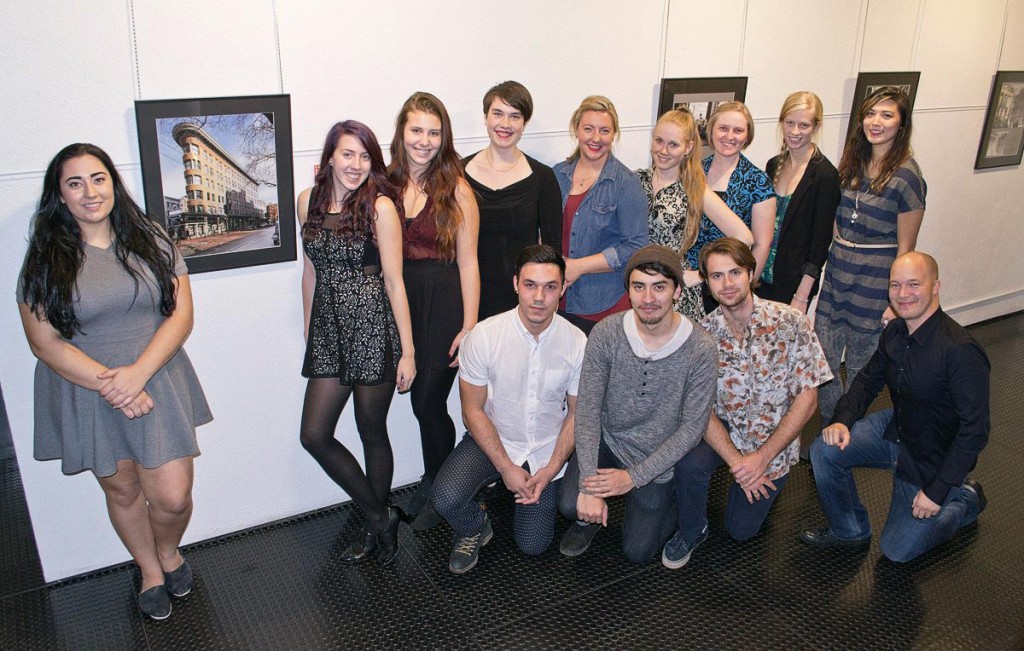
Every year, students in Darren Bernaerdt’s Principles of Imaging Processing course (PHOTO 1248) are assigned to visit the Archives to find historical photographs of Vancouver. After determining the exact location and perspective of each selected photograph, they travel to the original site to replicate the photographs with a digital SLR camera. This year’s students chose a selection of street scenes of downtown Vancouver from the 1890s to 1940s.
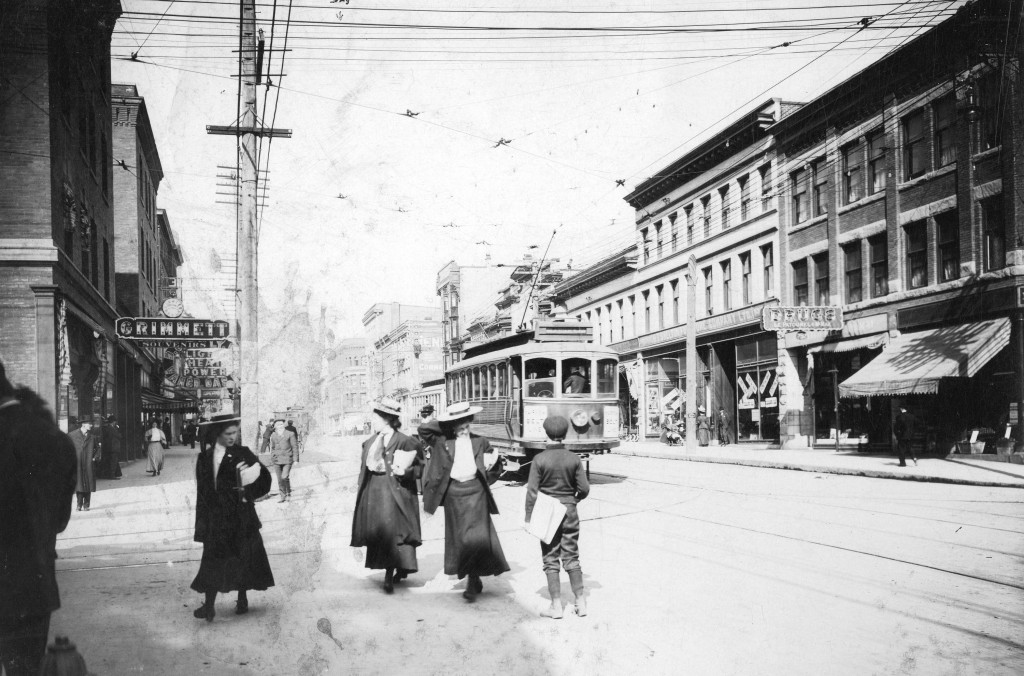
It goes without saying that the historical scenes are very difficult to replicate. More often than not, the original images were photographed from vantage points that are no longer accessible due to relocation of sidewalks or the construction of new buildings that obstruct views.
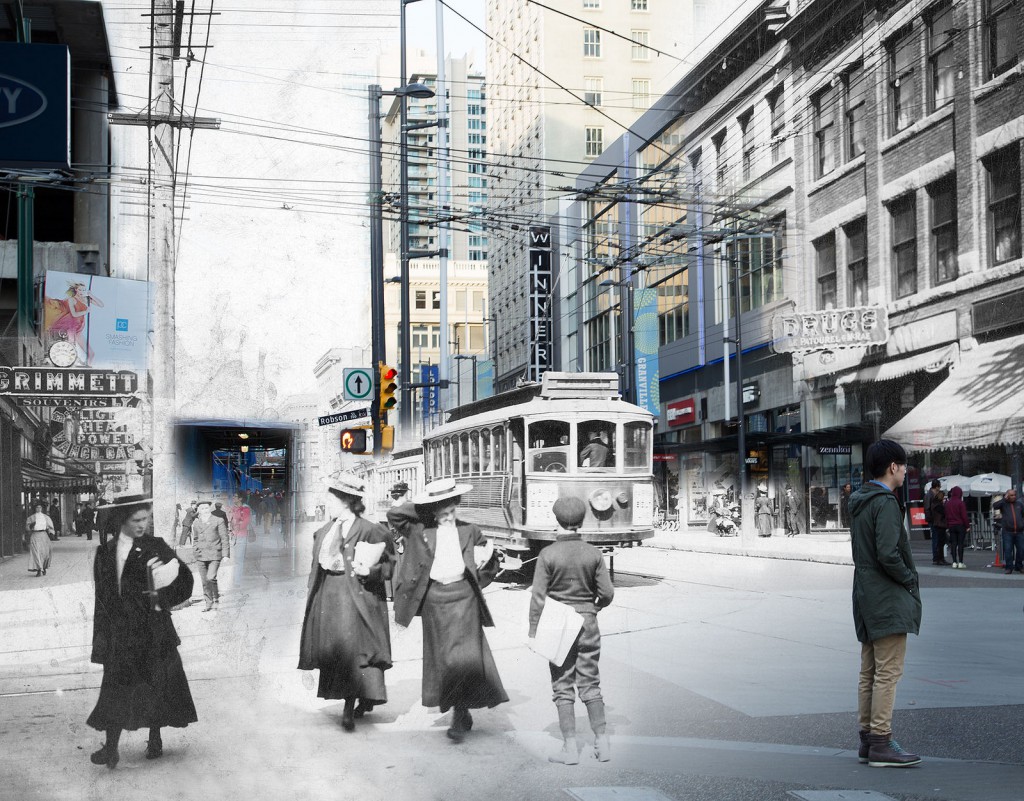
Nonetheless, the obstacles are overcome by using digital imaging techniques. Students edit the photos on the computer by skewing, distorting, and twisting the images to replicate the focal length and angle of the original archival photograph. Students then mask and retouch the old and new photographs, merging past and present elements into a seamless digital composite, contrasting old and new.
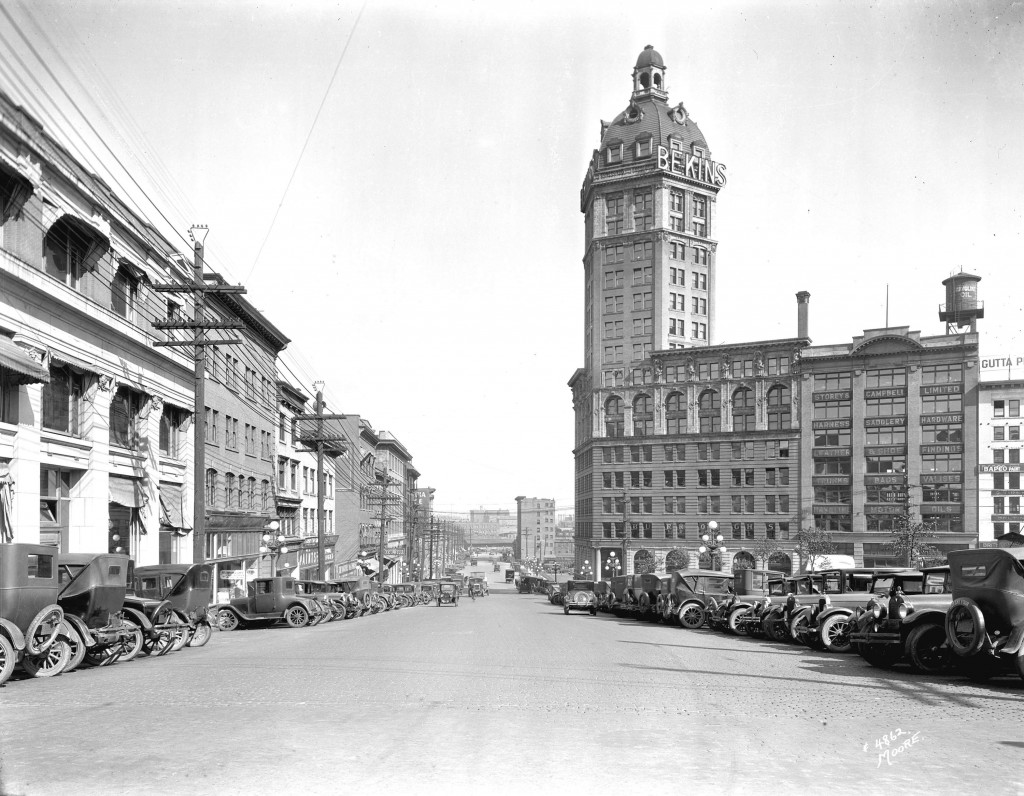
Upon viewing these photographs, one notices immediately the buildings and structures that still stand today. Looking closer, the photographs reveal elements that no longer exist. Formal attire, street cars, horse drawn carriages, and old fashioned street fixtures are things of the past, but these heritage buildings provide us with anchors to that era. These photographs bring to life what Vancouver used to be, and remind us of the city’s rich heritage, history and growth.
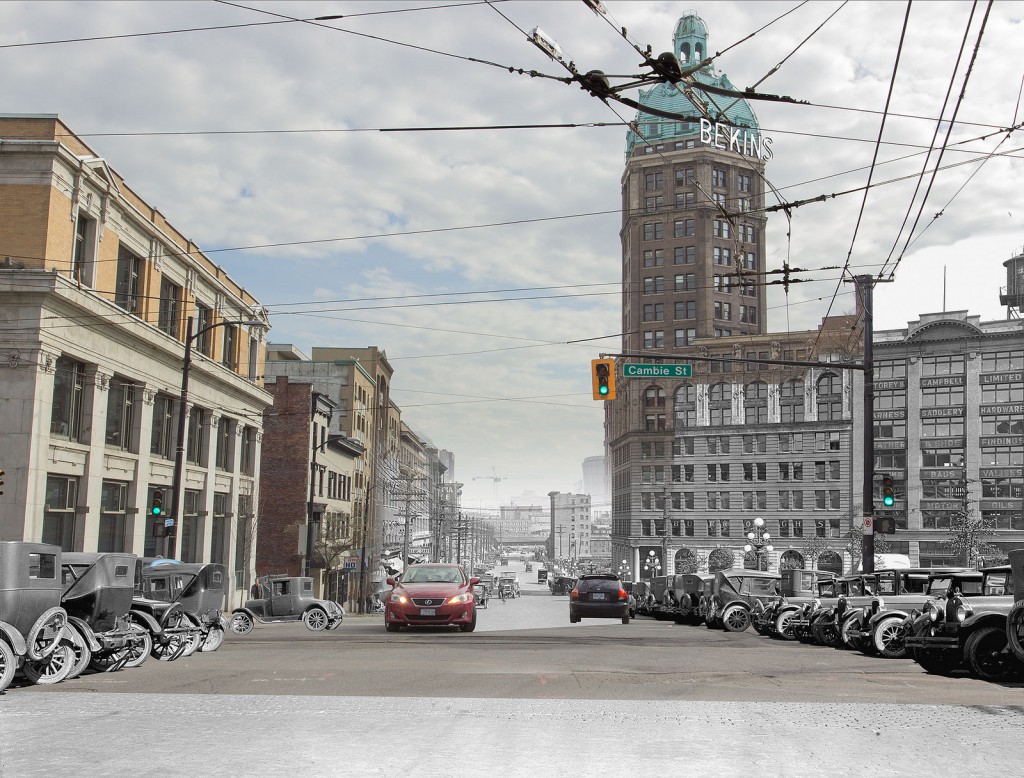
Merging Time will be on display weekdays from 9 AM to 5 PM at the City of Vancouver Archives’ gallery until February 27th, 2015.
